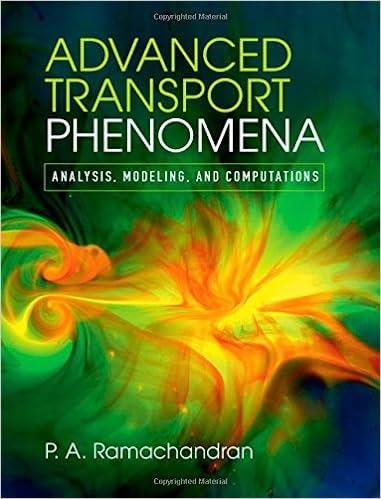Consider the series reaction scheme in a constant batch reactor: [mathrm{A} xrightarrow{k_{1}} mathrm{~B} xrightarrow{k_{2}} mathrm{C} xrightarrow{k_{3}} mathrm{D}]
Question:
Consider the series reaction scheme in a constant batch reactor:
\[\mathrm{A} \xrightarrow{k_{1}} \mathrm{~B} \xrightarrow{k_{2}} \mathrm{C} \xrightarrow{k_{3}} \mathrm{D}\]
Assuming all reactions are first order and irreversible, set up the governing equations in matrix form for \(\mathrm{A}, \mathrm{B}\), and \(\mathrm{C}\). Assume the rate constants \(k_{1}=2, k_{2}=1\), and \(k_{3}=2\) and initial concentrations of \(C_{\mathrm{A}}=1, C_{\mathrm{B}}=0\), and \(C_{\mathrm{C}}=0\). Note that time and concentrations are in arbitrary units for illustrative purposes.
Solve the equations using matrix algebra and plot the concentration profiles.
If the same reaction were now carried out in a CSTR with a mean residence time of 2, what would the exit steady-state conversion be for the inlet concentrations of \(C_{\mathrm{A}}=1, C_{\mathrm{B}}=0\), and \(C_{\mathrm{C}}=0\).
Step by Step Answer:

Advanced Transport Phenomena Analysis Modeling And Computations
ISBN: 9780521762618
1st Edition
Authors: P. A. Ramachandran




